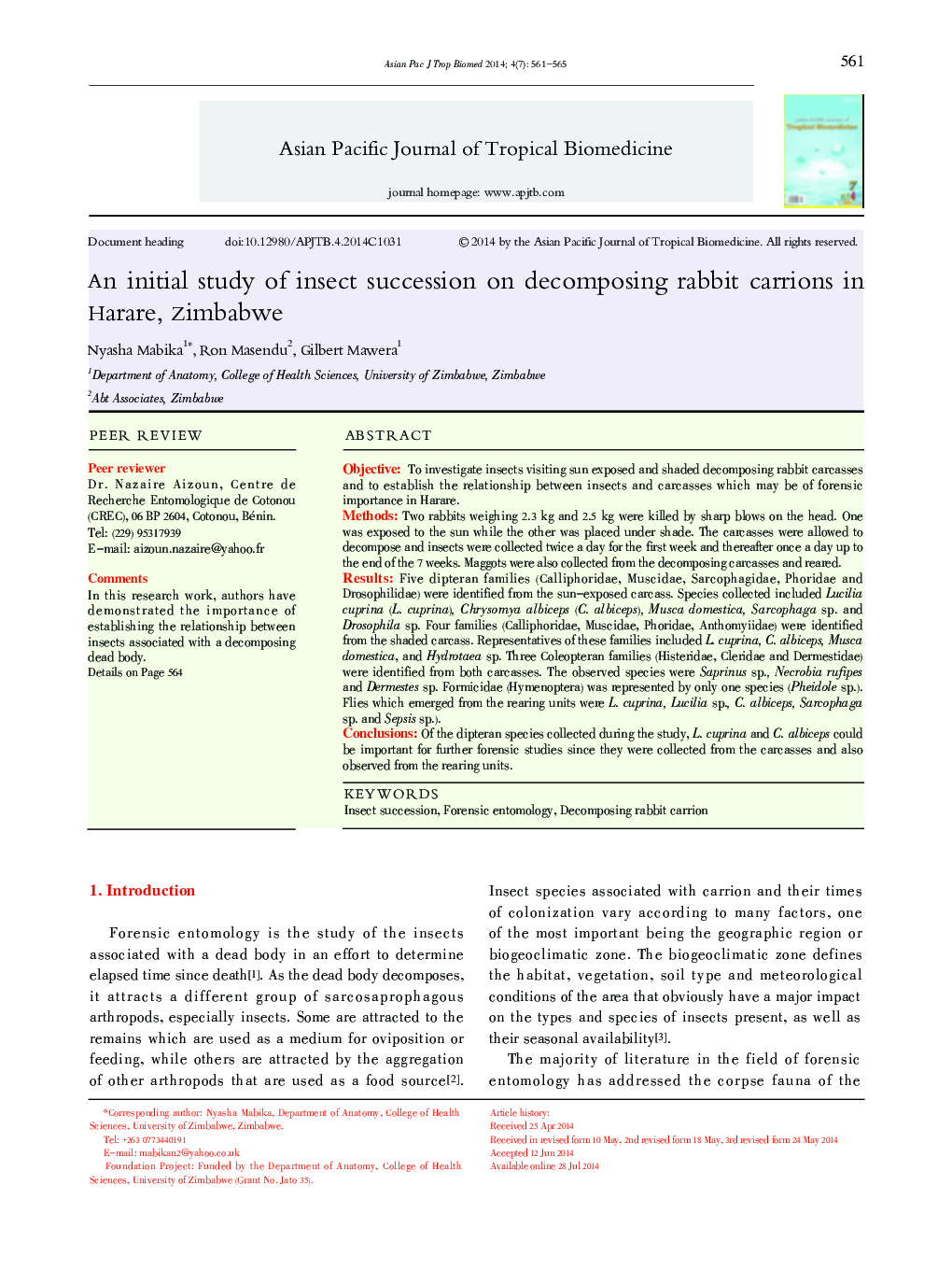| Article ID | Journal | Published Year | Pages | File Type |
|---|---|---|---|---|
| 2032568 | Asian Pacific Journal of Tropical Biomedicine | 2014 | 5 Pages |
ABSTRACTObjectiveTo investigate insects visiting sun exposed and shaded decomposing rabbit carcasses and to establish the relationship between insects and carcasses which may be of forensic importance in Harare.MethodsTwo rabbits weighing 2.3 kg and 2.5 kg were killed by sharp blows on the head. One was exposed to the sun while the other was placed under shade. The carcasses were allowed to decompose and insects were collected twice a day for the first week and thereafter once a day up to the end of the 7 weeks. Maggots were also collected from the decomposing carcasses and reared.ResultsFive dipteran families (Calliphoridae, Muscidae, Sarcophagidae, Phoridae and Drosophilidae) were identified from the sun-exposed carcass. Species collected included Lucilia cuprina (L. cuprina), Chrysomya albiceps (C. albiceps), Musca domestica, Sarcophaga sp. and Drosophila sp. Four families (Calliphoridae, Muscidae, Phoridae, Anthomyiidae) were identified from the shaded carcass. Representatives of these families included L. cuprina, C. albiceps, Musca domestica, and Hydrotaea sp. Three Coleopteran families (Histeridae, Cleridae and Dermestidae) were identified from both carcasses. The observed species were Saprinus sp., Necrobia rufipes and Dermestes sp. Formicidae (Hymenoptera) was represented by only one species (Pheidole sp.). Flies which emerged from the rearing units were L. cuprina, Lucilia sp., C. albiceps, Sarcophaga sp. and Sepsis sp.).ConclusionsOf the dipteran species collected during the study, L. cuprina and C. albiceps could be important for further forensic studies since they were collected from the carcasses and also observed from the rearing units.
